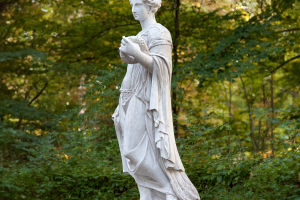Have you ever looked at a photograph that made you stop and question reality? Maybe a floating object, a melting landscape, or a face replaced by a clock?
Welcome to the strange and fascinating world of surrealist photography. Unlike traditional photography that captures moments as they are, surrealist photography twists them into something new—something that challenges logic and awakens imagination.
Let's explore how surrealism entered the world of photography, how artists create such dreamlike images, and why this form continues to captivate audiences around the world. Get ready to question what you see!
The Origins of Surrealism in Photography
Surrealism began as a cultural movement in the 1920s, driven by writers and artists like André Breton and Salvador Dalí. Its goal was to unlock the unconscious mind and blend dreams with reality. While painting and literature led the charge, photography soon joined the movement—adding a unique twist: capturing the surreal with a tool designed for realism.
Early surrealist photographers like Man Ray and Maurice Tabard used experimental techniques such as double exposure, solarization, and photomontage to create impossible visuals. By manipulating film and light, they broke photography free from its documentary roots and turned it into a playground for imagination.
Techniques That Defy Logic
Surrealist photographers use a wide range of creative methods to distort reality. These include:
• Double Exposure: Two images are layered to form a single, often dreamlike result.
• Photomontage: Combining elements from different photographs to create a composite that doesn't follow physical laws.
• Distortion: Warping objects or figures to appear unreal.
• Unusual Scale: Making tiny objects look massive—or vice versa—to create visual tension.
• Symbolism: Using unexpected objects, such as clocks, masks, or eyes, to represent abstract ideas like time or identity.
In modern times, digital tools have expanded the surrealist toolkit. However, the goal remains the same: to make the viewer question what is possible and what is imagined.
Famous Figures in Surrealist Photography
Among the most influential surrealist photographers is Man Ray, who transformed ordinary objects into enigmatic artworks. His 1924 piece Le Violon d'Ingres turned a woman's back into a violin, merging human and object to create a playful illusion.
Another key figure, Jerry Uelsmann, mastered analog photomontage in the 20th century, creating dreamlike landscapes entirely in the darkroom—long before digital editing existed.
Today, contemporary artists like Erik Johansson continue the tradition with digital manipulation. Johansson's photographs often show visually impossible situations—like a person vacuuming up the sky or a road turning into a waterfall. These works remind us that surrealism is alive and evolving.
Emotional and Psychological Impact
What sets surrealist photography apart is not just its technical creativity but its emotional depth. These images often evoke feelings of mystery, anxiety, wonder, or nostalgia. By breaking the rules of reality, surrealist photos give shape to feelings that are hard to express with words.
Psychologists have noted that surrealist imagery often triggers activity in parts of the brain responsible for memory and imagination. Dr. Anjan Chatterjee, a cognitive neuroscientist at the University of Pennsylvania, explains that visual surprises—such as those seen in surrealist images—activate emotional and creative centers of the brain. This helps explain why such images linger in our minds.
Why Surrealism Still Matters
In an age of selfies and digital filters, surrealist photography offers something deeper. It doesn't just show how the world looks—it explores how it feels. Whether commenting on identity, dreams, or society, surrealist photographers give us a lens into a more imaginative and emotional version of reality.
This form of photography has also influenced advertising, fashion, film, and even virtual reality design. Its ability to bend time, space, and logic makes it endlessly relevant and inspiring.
Conclusion: Do You See What I See?
Surrealism in photography invites us to step beyond the limits of everyday perception. It blends the strange and the familiar, the real and the imagined. And in doing so, it speaks to a part of us that logic can't quite reach.
So next time you see a photo that makes you look twice—pause and ask yourself: Is this reality… or something more?
What's the most surreal image you've ever seen—and how did it make you feel? Let's talk dreams, illusions, and imagination.


